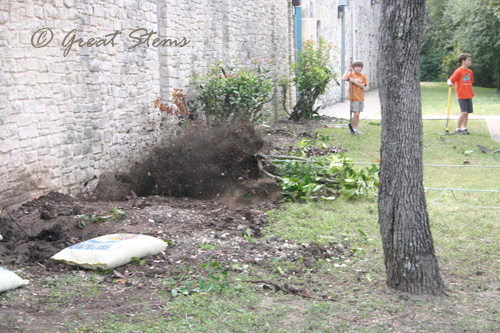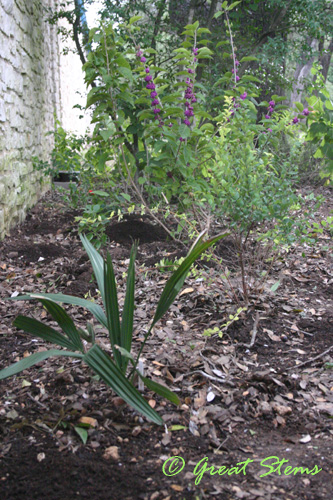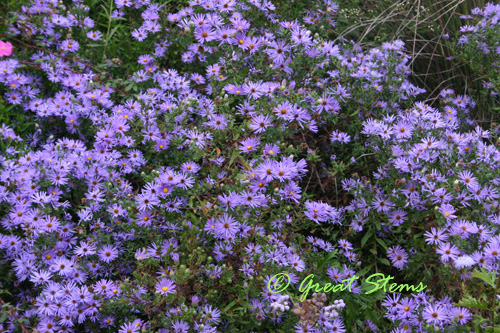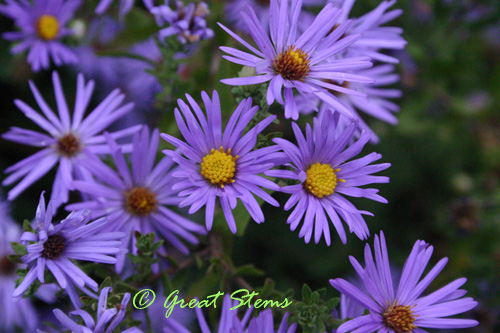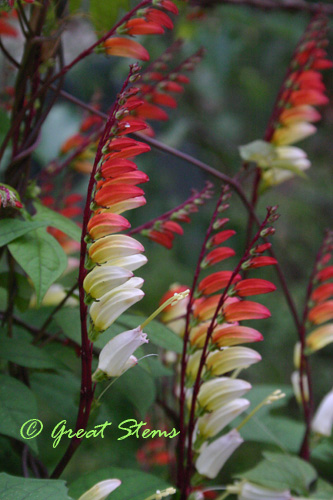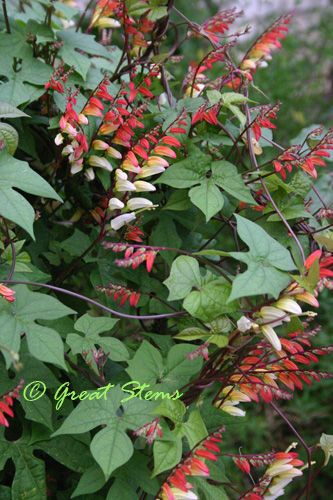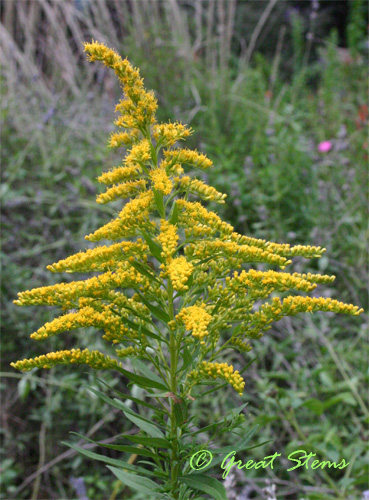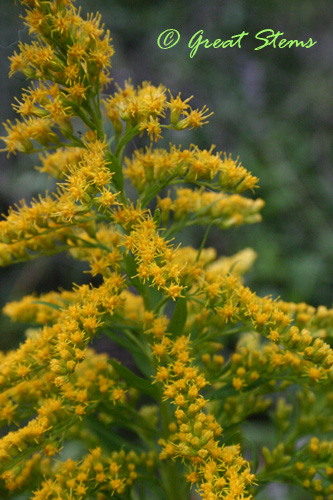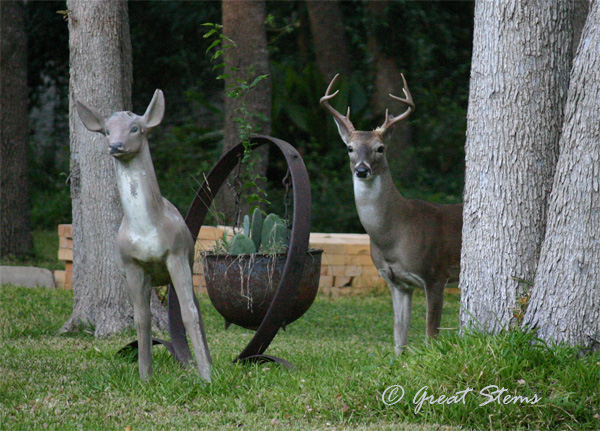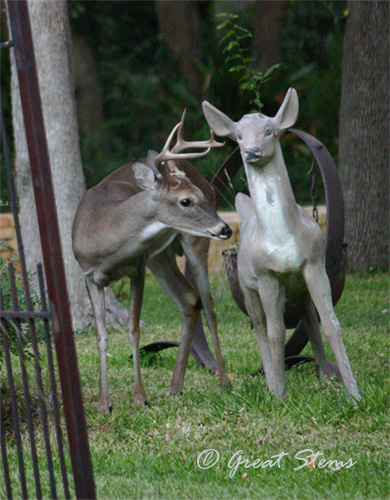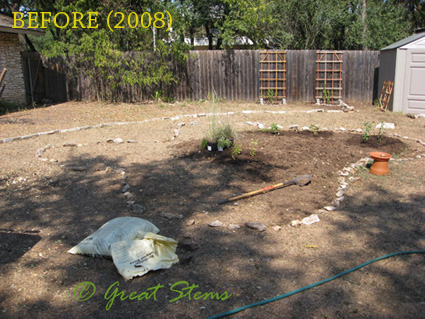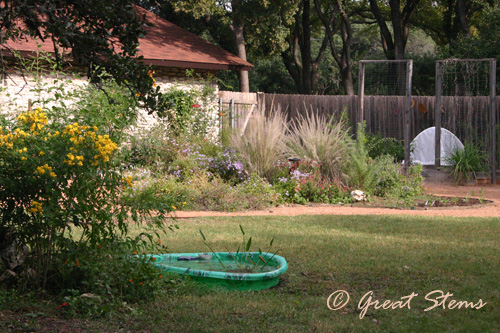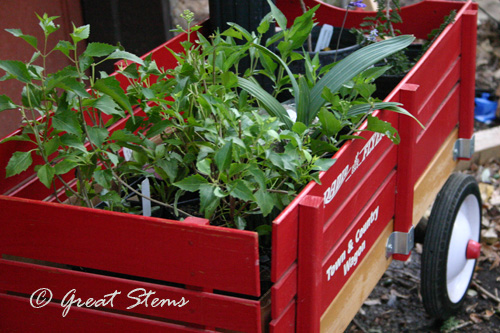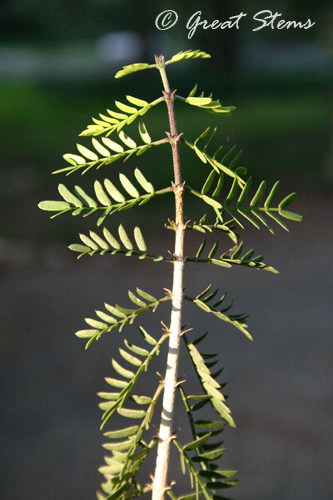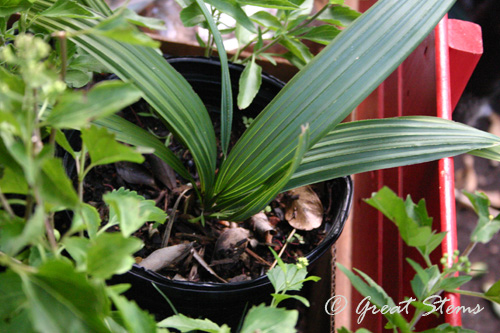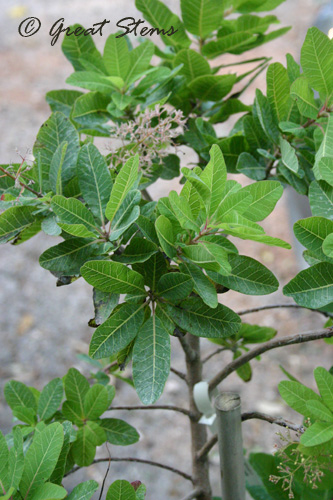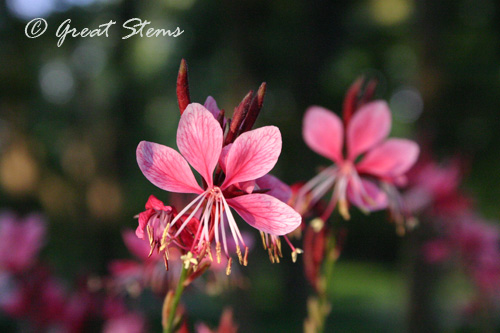This post is dedicated to my father in honor of his birthday tomorrow, November 13 — he thought this plant was just as beautiful as I did when we were in Mexico last year for my sister’s wedding. Sure, it might be weird to dedicate a post about a plant called Exotic Love to one’s father, but whatever. Happy Birthday, Daddy!
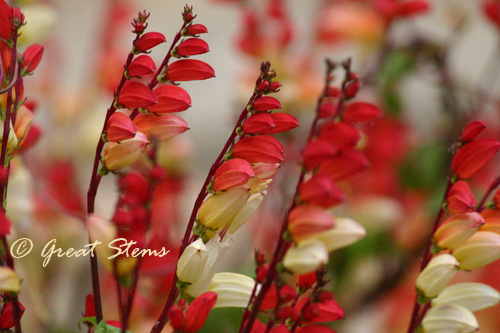 The Exotic Love Vine (Ipomoea lobata) is proving to be the most vibrant and heavy bloomer in my fall garden — just when I think it can’t possibly get any better, it does.
The Exotic Love Vine (Ipomoea lobata) is proving to be the most vibrant and heavy bloomer in my fall garden — just when I think it can’t possibly get any better, it does.
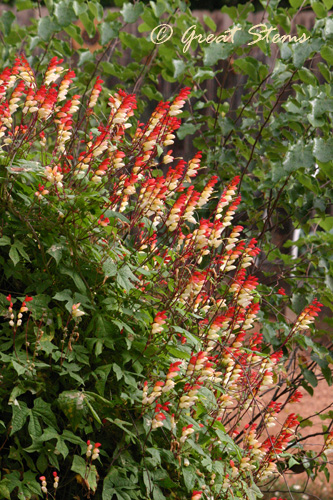 Native to Central America and South America, this vine grows like crazy with nary a bloom until fall, when it explodes with eye-popping stalks of cascading red, yellow, and white blooms.
Native to Central America and South America, this vine grows like crazy with nary a bloom until fall, when it explodes with eye-popping stalks of cascading red, yellow, and white blooms.
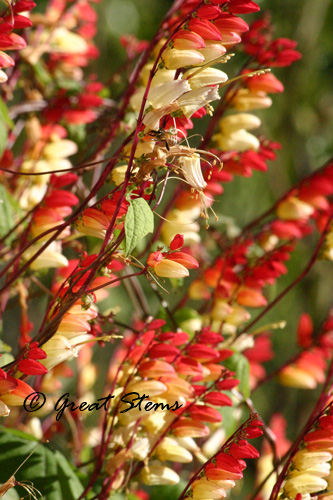 This vine is also Firecracker Vine and Spanish Flag with good reason, but I seem to prefer calling it “Exotic Luvvvvv Vine.” I’ve also had the theme song to “Love Boat” stuck in my head while creating this post, with my own version, “Love Vine.” Sing it with me now, The Love Vine… promises something for everyone…. (I’m happy to report that I did not actually know all of the original lyrics… just, uh, most of them.)
This vine is also Firecracker Vine and Spanish Flag with good reason, but I seem to prefer calling it “Exotic Luvvvvv Vine.” I’ve also had the theme song to “Love Boat” stuck in my head while creating this post, with my own version, “Love Vine.” Sing it with me now, The Love Vine… promises something for everyone…. (I’m happy to report that I did not actually know all of the original lyrics… just, uh, most of them.)
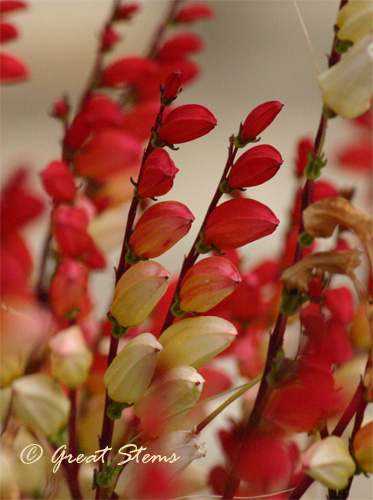 What is thrilling me right now is that the lower blooms have opened up, creating little cups that I like to imagine are filled with the nectar of the gods.
What is thrilling me right now is that the lower blooms have opened up, creating little cups that I like to imagine are filled with the nectar of the gods.
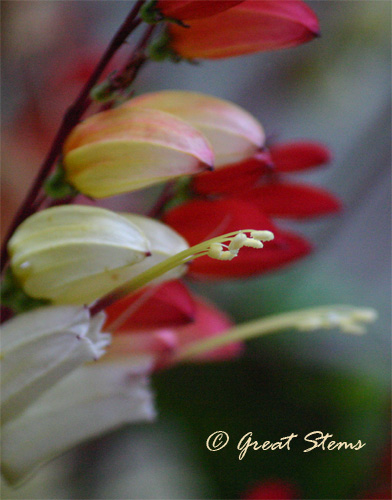
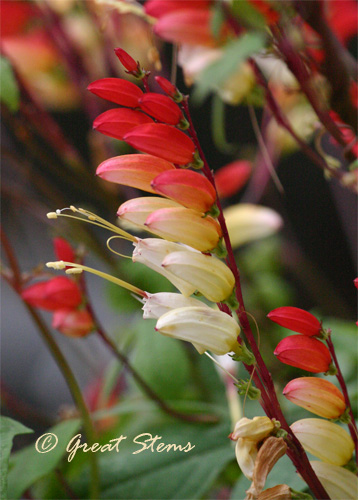 From dawn to dusk, there are bees all over, seeking the sweet liquid provided by the nectaries.
From dawn to dusk, there are bees all over, seeking the sweet liquid provided by the nectaries.
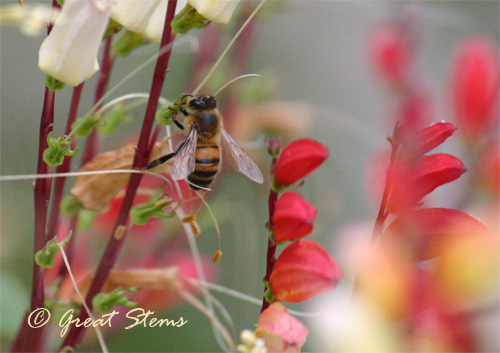
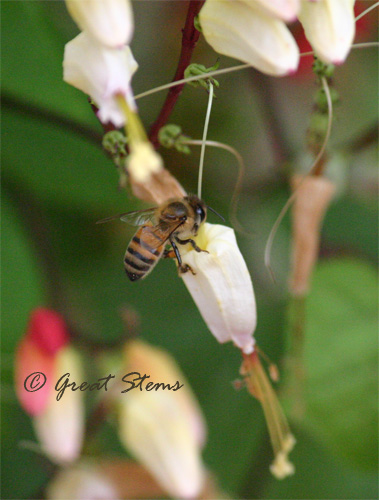
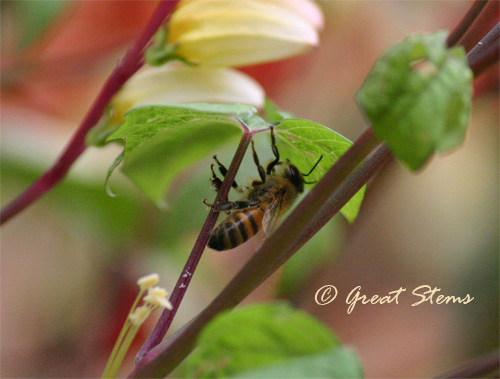 I haven’t seen this many happy honeybees since I was growing cantaloupe, when they were all abuzz for the pollen. Now it’s a sugar frenzy. Somewhere nearby, there must be a hive with some really yummy honey in production.
I haven’t seen this many happy honeybees since I was growing cantaloupe, when they were all abuzz for the pollen. Now it’s a sugar frenzy. Somewhere nearby, there must be a hive with some really yummy honey in production.
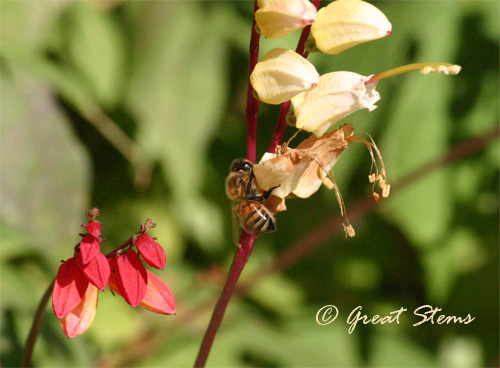 When the blooms are spent, they dangle like little lanterns.
When the blooms are spent, they dangle like little lanterns.
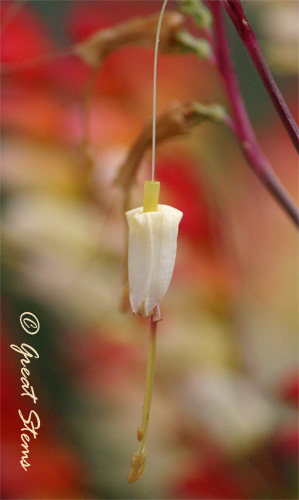
The bees, of course, take advantage and lap up the sweet liquid.
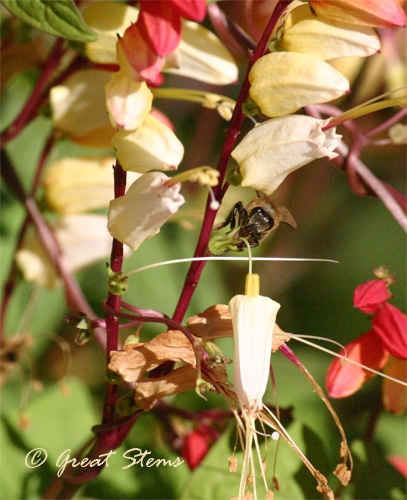
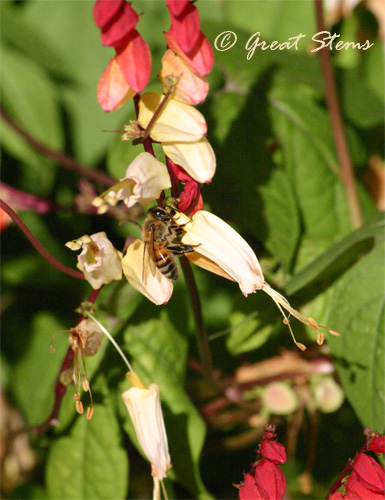 Wasps are other eager drinkers, and they’ve been playing nice with the honeybees. I just wish that the blooms had come earlier in the season so that I could have seen hummingbirds at the flowers, too.
Wasps are other eager drinkers, and they’ve been playing nice with the honeybees. I just wish that the blooms had come earlier in the season so that I could have seen hummingbirds at the flowers, too.
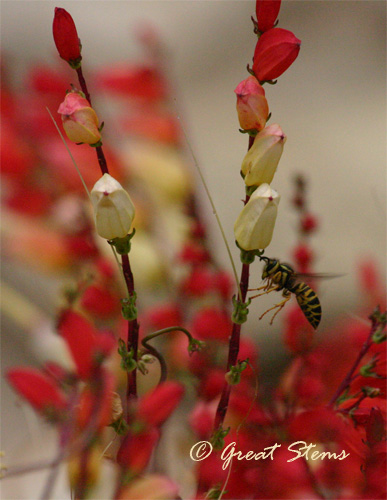
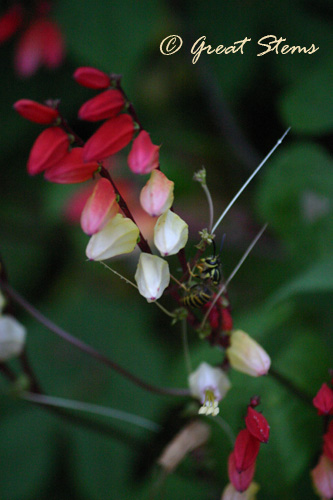 Seeds are in production, and I plan to collect them and share with my local gardening buddies. I hope to grow this lovely vine year after year after year…
Seeds are in production, and I plan to collect them and share with my local gardening buddies. I hope to grow this lovely vine year after year after year…
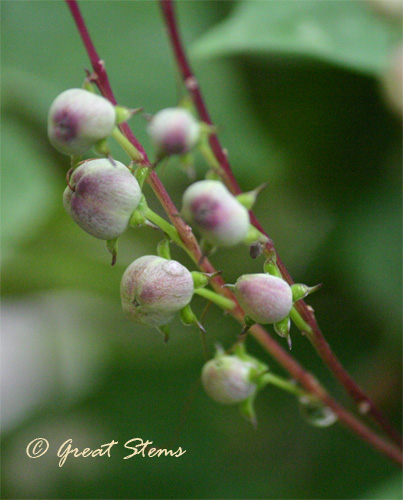 This year, the vines decorated an obelisk-type trellis and made a rather impressive shrub-like shape, hiding the trellis deep within.
This year, the vines decorated an obelisk-type trellis and made a rather impressive shrub-like shape, hiding the trellis deep within.
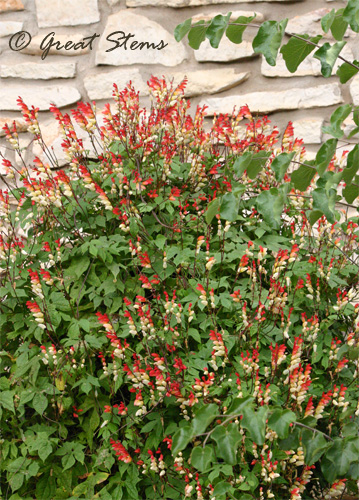 Because the vines had reached the top of the obelisk, they wrapped around one another, creating a nifty rope.
Because the vines had reached the top of the obelisk, they wrapped around one another, creating a nifty rope.
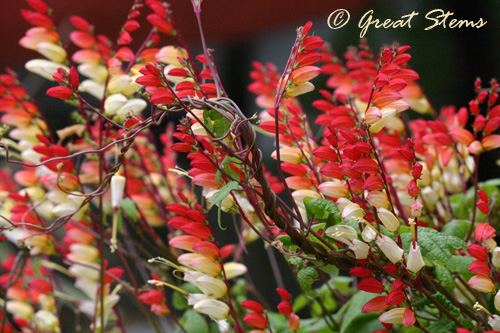 Next year, I’m thinking it will be fun to see how tall the vines can grow — wouldn’t it look pretty as a blooming wall of the house?
Next year, I’m thinking it will be fun to see how tall the vines can grow — wouldn’t it look pretty as a blooming wall of the house?
In other news, I have a really cool chrysalis hanging in a very terrible spot — the middle of my back door’s door frame. I’ve got an idea of the species, but if I don’t move the chrysalis, my high-maintenance husky is likely to destroy it in one of his endeavors to scratch his way into the house if he’s been outside too long. Tune in for the next post when I document my first-ever “Chrysalis Movin’ and Gluin’.” Unless the husky gets there first…
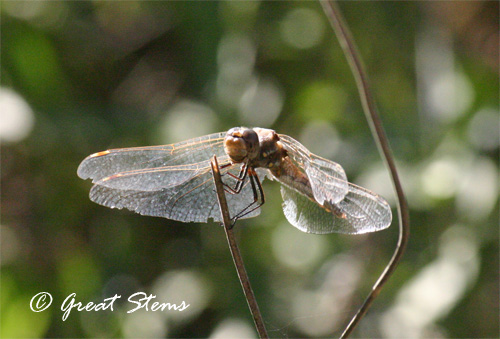
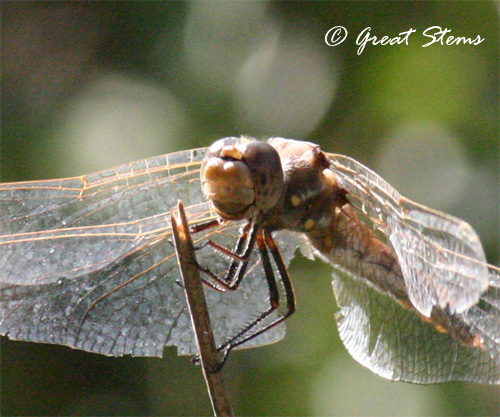
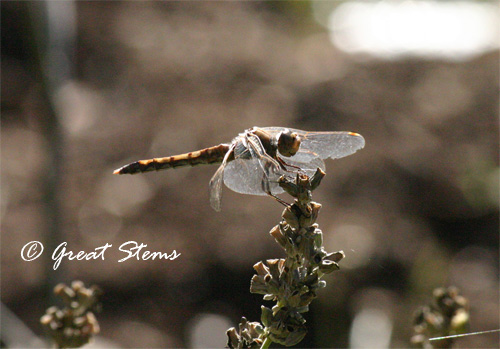
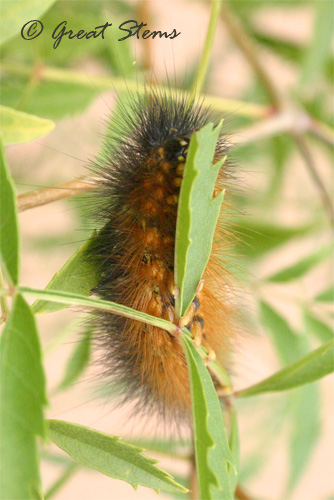
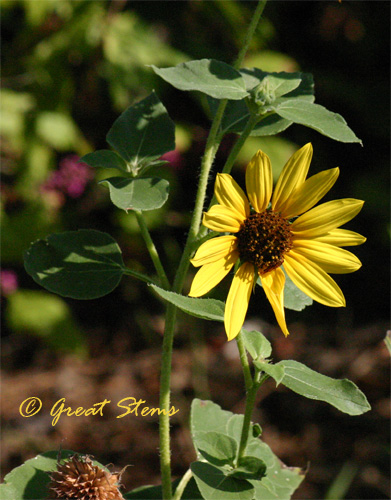
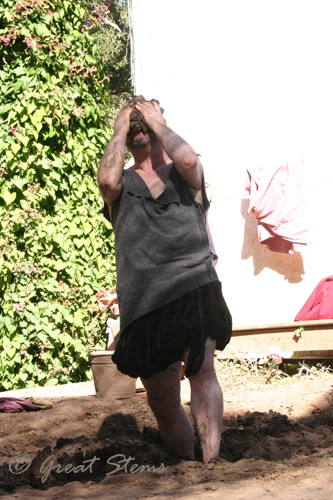
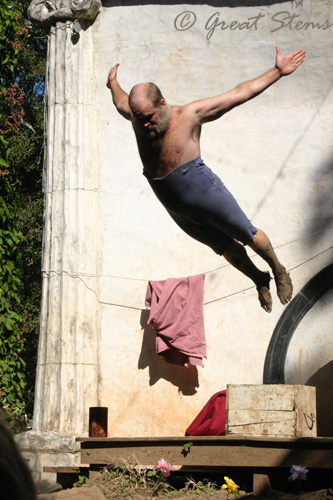


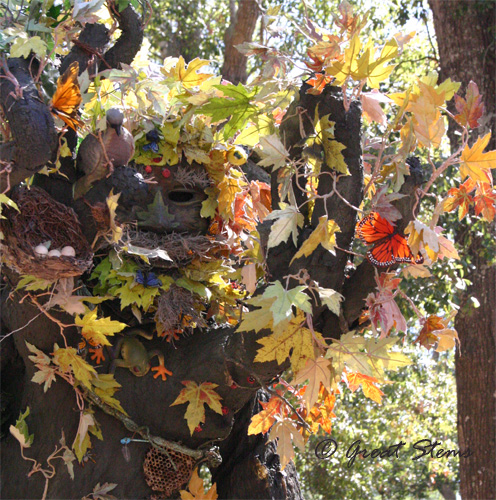
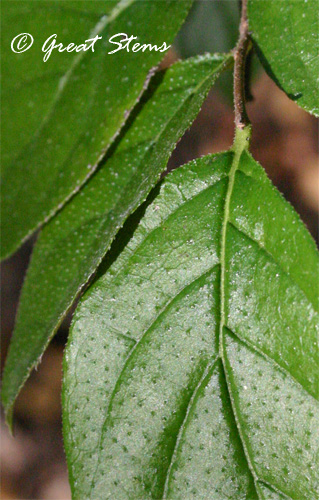
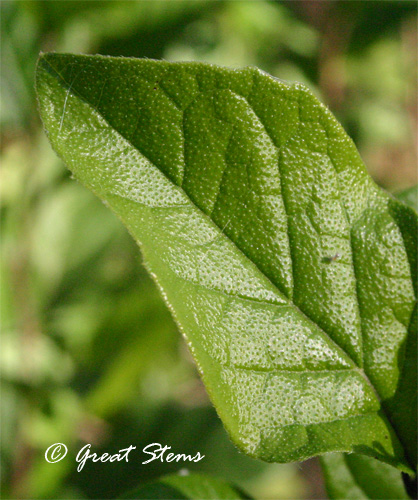
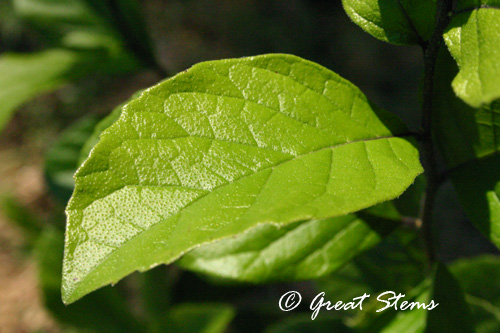
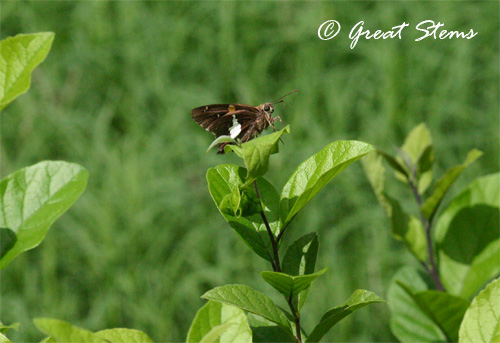
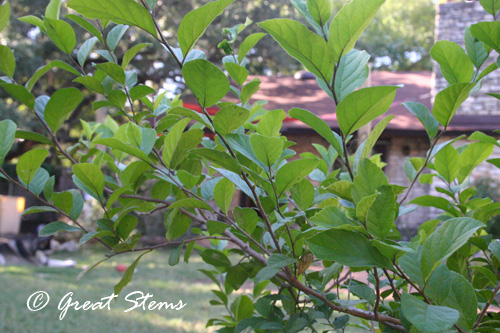
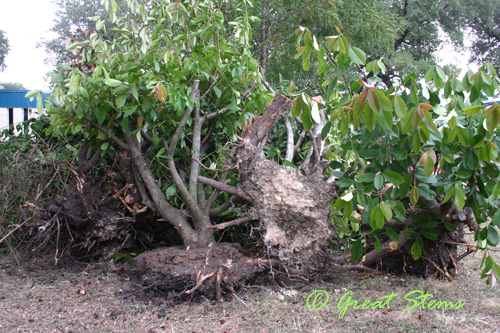 Well, haven’t I been the slacker, not posting anything on Great Stems for a few days? I’ve missed my blog. But I have an excuse. This past week I:
Well, haven’t I been the slacker, not posting anything on Great Stems for a few days? I’ve missed my blog. But I have an excuse. This past week I: